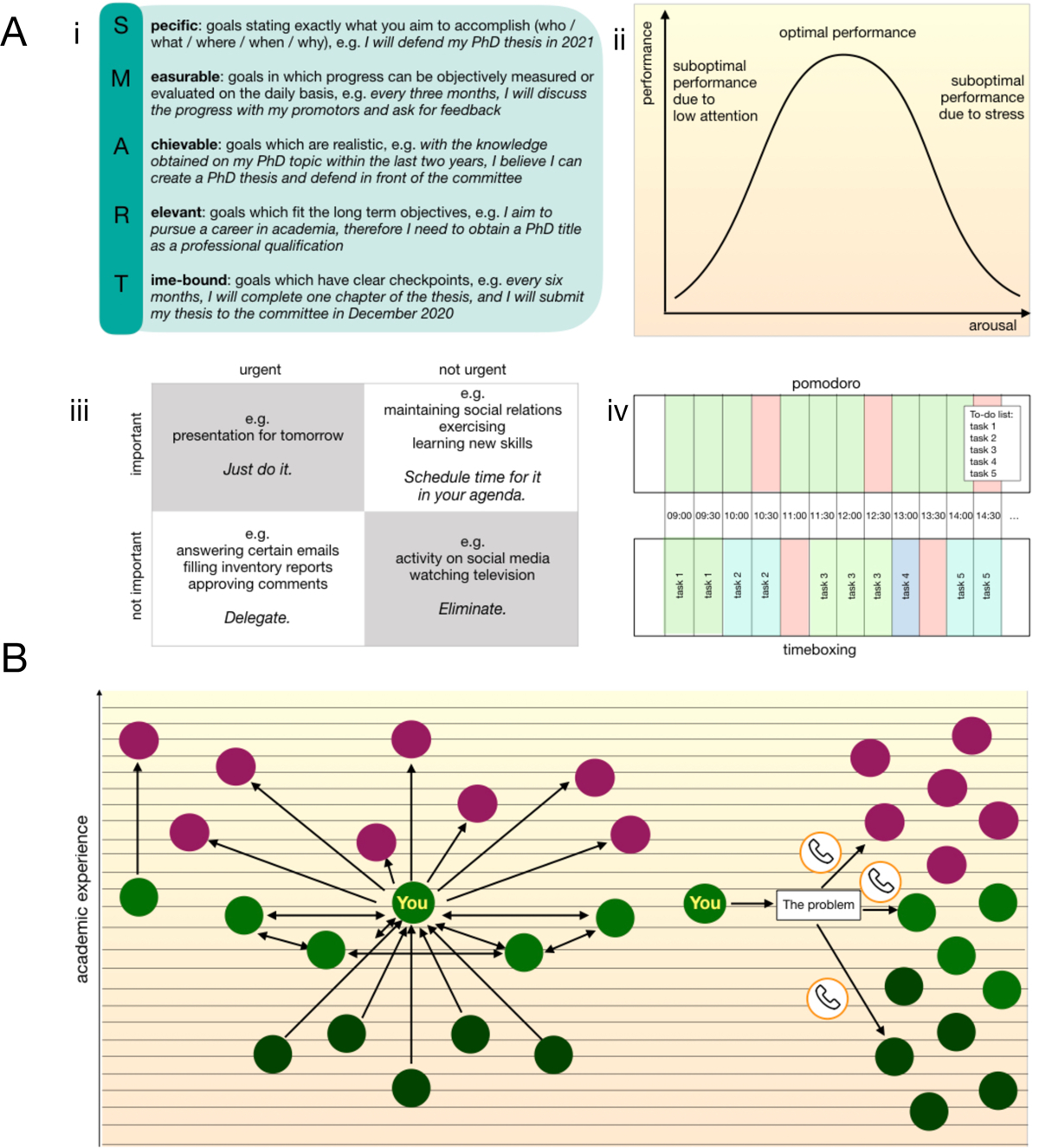Figure 1.

A Popular concepts for goal setting/time management. i: the S.M.A.R.T. approach for setting goals (Raia, 1965), with examples. ii: the Yerkes-Dodson law. There is an optimal level of arousal above which performance decreases due to high stress level. iii: the Eisenhower chart. The key to long term success is to manage important but not urgent tasks, iv: the pomodoro technique and timeboxing for planning work time. In the pomodoro technique, tasks are kept in lists and working time is pre-divided into periods of deep work (green) interleaved with breaks (red). In the timeboxing, every task is assigned with a precise time slot. B Models of mentoring. Left: the traditional, hierarchical view. Middle: modern, multilayered model. The mentee becomes the centre of their own mentoring network, with multiple mentors at different career stages (magenta), peer-coaching with other ECRs at a similar stage (light green), and more junior mentees (dark green). Right: “lifeline”/“advisory board” model: a network of mentors at different career stages serving as an advisory board.
